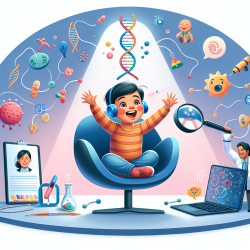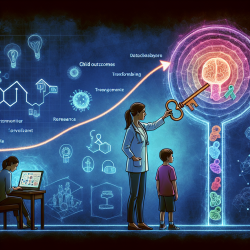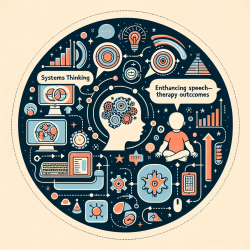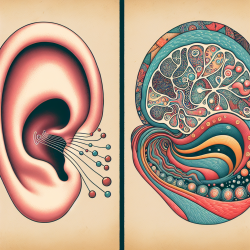Introduction
Autism Spectrum Disorders (ASD) are complex neurodevelopmental conditions influenced by both genetic and environmental factors. Recent research, such as the study "Conceptualizing Epigenetics and the Environmental Landscape of Autism Spectrum Disorders," highlights the significant role of epigenetics in the development and manifestation of ASD. Understanding these mechanisms can empower practitioners to tailor interventions that address the unique needs of each child.
What is Epigenetics?
Epigenetics involves changes in gene expression that do not alter the DNA sequence but can be influenced by environmental factors. These changes can be reversible and are crucial in understanding how external factors like stress, nutrition, and exposure to toxins can affect gene expression related to ASD.
Key Findings from the Research
The research outlines several key points:
- DNA Methylation: This process can silence genes and is often altered in individuals with ASD, affecting brain development and function.
- Histone Modification: Changes in histone proteins can influence gene expression and are linked to ASD pathophysiology.
- Environmental Interactions: Factors such as maternal health, prenatal stress, and early life experiences can impact epigenetic states, increasing ASD risk.
Implications for Practitioners
Understanding the epigenetic landscape of ASD provides practitioners with insights into potential intervention strategies:
- Personalized Interventions: By considering the child's unique genetic and environmental background, practitioners can develop more effective, individualized therapy plans.
- Early Intervention: Identifying and addressing environmental risk factors early can mitigate potential epigenetic changes that contribute to ASD.
- Collaborative Care: Working with families to create supportive environments can help manage stressors that may influence epigenetic expression.
Encouraging Further Research
While current findings are promising, ongoing research is essential to fully understand the complex interactions between genes and the environment in ASD. Practitioners are encouraged to stay informed about new developments and consider participating in or supporting research initiatives.
Conclusion
Epigenetics offers a powerful lens through which to understand and address ASD. By integrating these insights into practice, practitioners can enhance therapy outcomes and support the development of children with ASD.
To read the original research paper, please follow this link: Conceptualizing Epigenetics and the Environmental Landscape of Autism Spectrum Disorders.










